Blue tones with spots of warmer colors.


After months of abnormally dry to severe drought conditions, Chicago had a near record “rainfall event” the weekend of July 1–2, especially on Sunday.
To me, it seemed like a normal rain, but I don’t have a personal basement to worry about. I gave up any thought of outdoor activities and stuck to reading, TV, etc. I figured I’d be grateful if this rain, plus a few others that preceded it, would put a dent in the severe drought conditions.
As of July 11, Chicago was still abnormally dry, but look at the difference.
June 10, 2023:
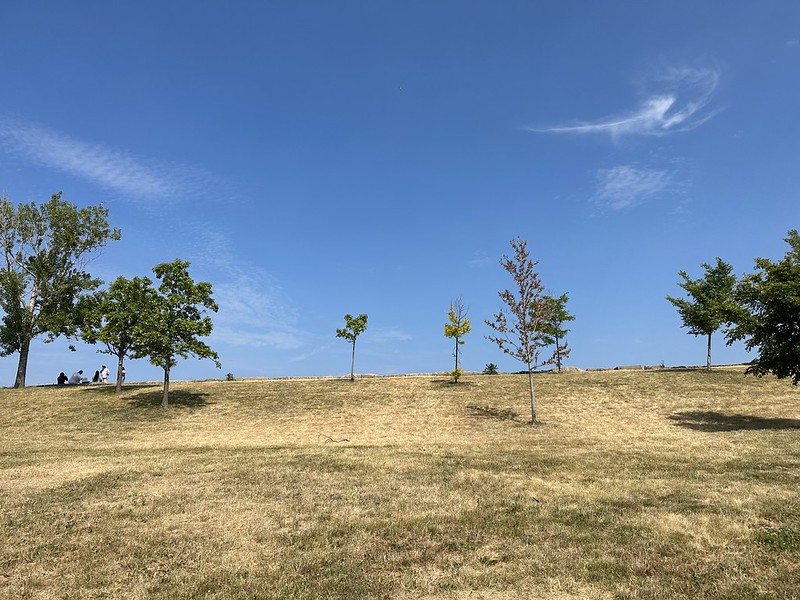
Same area, July 9, 2023, a little less than a month later:

When I noticed the orange light on my weather radio flashing the evening of July 12, I was hoping for beach hazards or at worst a flash flood watch, but, no, it was a tornado watch. As the sky got darker, it flipped to the red light — tornado warning. Not long after that, the sirens started — an eerie sound in the eerie premature twilight.
Over the next hour or so I saw several reports of tornadoes, starting with Summit in the southwest suburbs. Then it seemed like they were everywhere — southwest, west, north.
The sky brightened for a moment, then darkened, then brightened again just as another brief deluge descended. I looked — yes, there was a rainbow (and a very faint second mirror image rainbow). It faded, then reappeared, or maybe it was a second one in a similar spot. The second, with a faint mirror image like the first, was the full arch, which I couldn’t capture from my window.
It faded as blue sky appeared to the east, then pink from the setting sun tinged the clouds that had piled up.

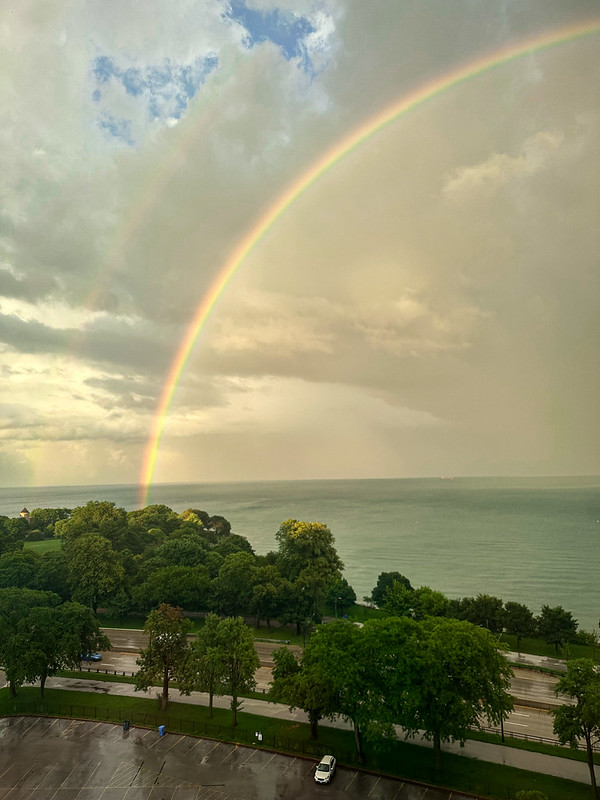


This is another Belt of Venus, this time taken in Wisconsin on Lake Michigan, November 28, 2015. Different from this one and this other one in Chicago.


I’ve long wanted to stay at Dunes Walk Inn, so I made a reservation for May 4. This is before the season starts, along with a two-night minimum. I had the Furness suite, which was like having a tidy apartment with a deck and a residential view — a home. Furnleigh Lane, wide enough for one car, adds to a certain country feel, even if nearby Rte. 20 does not. At the end of Furnleigh Lane lies a cemetery across the street from the Schoolhouse Shop. Lovely area for a little Dunes adventure.
With an early enough start, my travel companion J and I made it in time for the first Chesterton European Market of the year. I have no idea how much cash I spent — if only I could lose weight as fast as my wallet does.
After the market (during which I snuck into O’Gara and Wilson), we stopped at Red Cup Café, then set out for Rise ‘n’ Roll in Valparaiso. They had beet pickled eggs, a Schirf family favorite! Yes, please. I don’t know if beet picked eggs are an Amish/Mennonite thing, a German thing, or a Pennsylvania thing (or a combination — clearly they’re not just Pennsylvanian). Those made without the beets aren’t nearly as good.
After I had spent what felt like a couple of paychecks on food and more food, we went to Lucrezia Café for dinner. It’s usually too crowded to consider, but maybe we beat the dinner crush. Afterward, we visited the state park beach briefly — it was colder than I’d hoped.
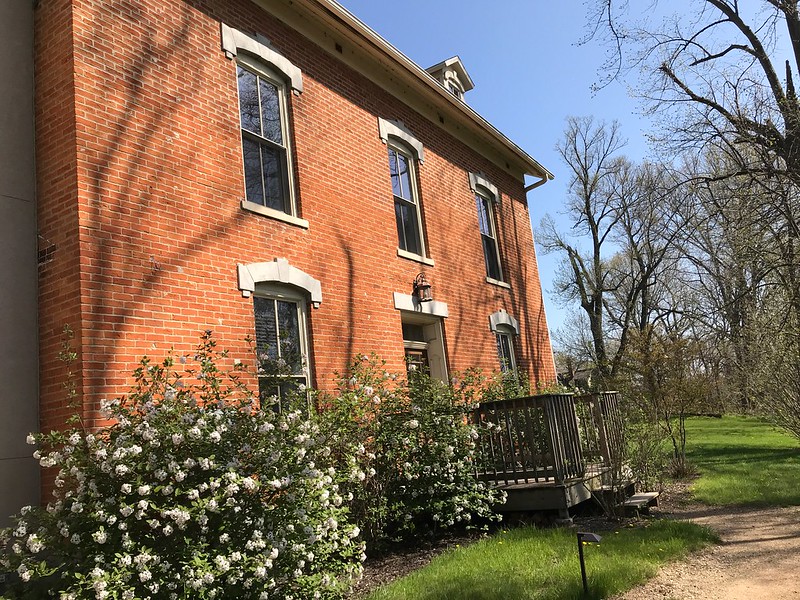
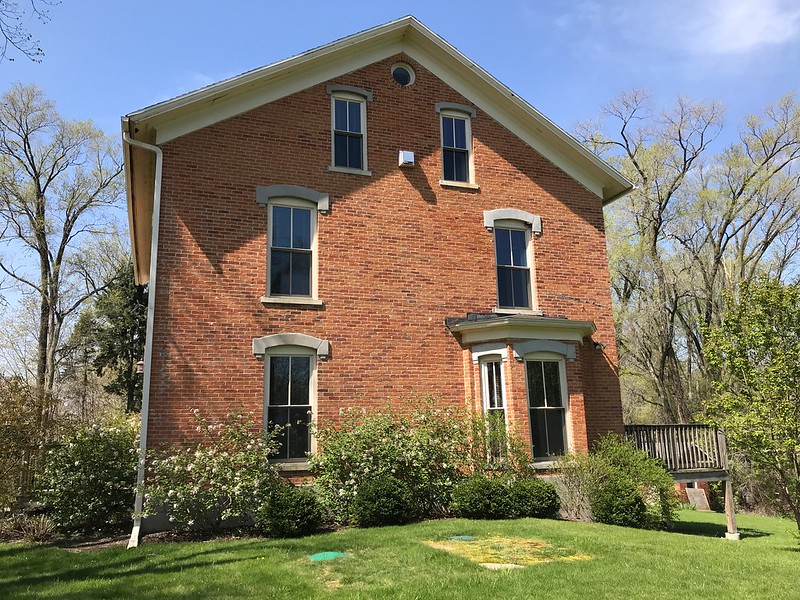

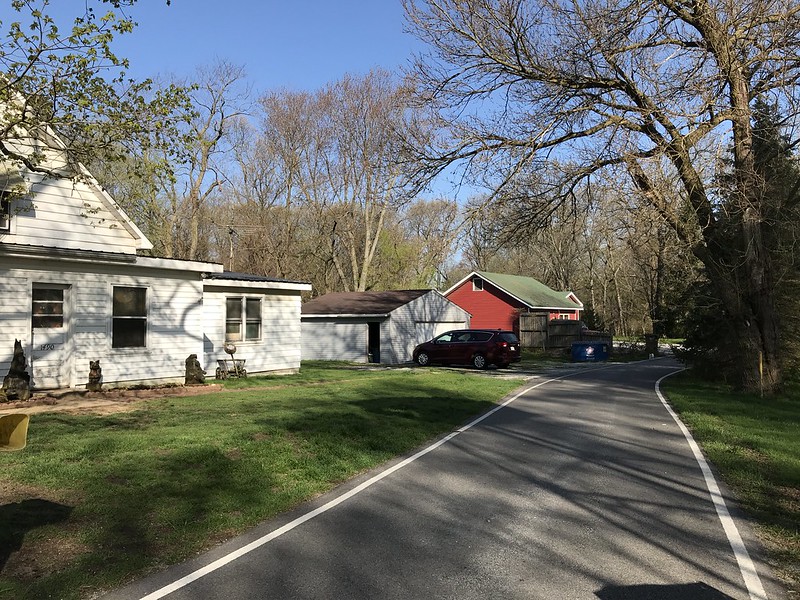
Breakfast was at Third Coast Café, followed by a quick stop at the Little Calumet River boat launch down the road. The flooding that had made the trail impassable for months had receded. The trees had been thinned out, too, to an extent that looks like devastation but is likely better for the wetland.
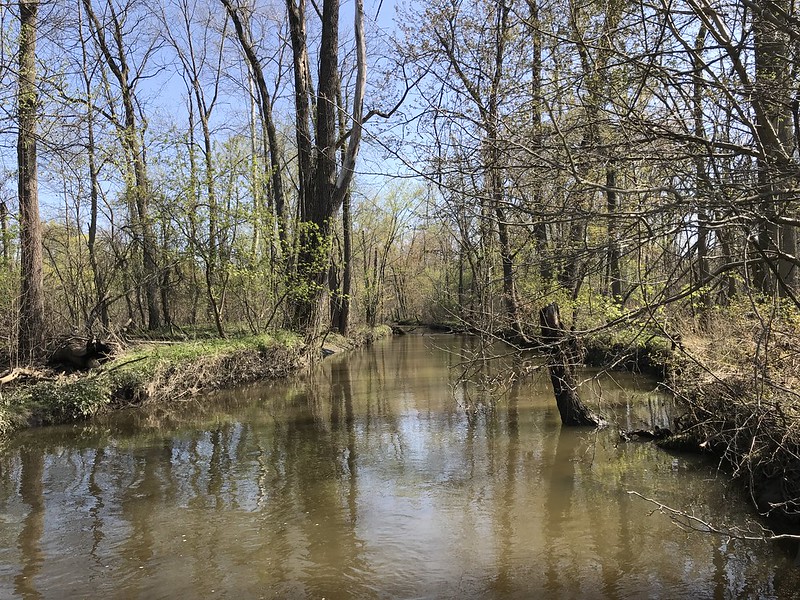
What to do? We went to the Schoolhouse Shop, where I found out the back patio was open. It was warm enough to sit outside, so after I had collected a shopping basket full (and then some), we got coffee and sat outside for close to two hours. Their feeders were attracting a lot of birds, including several species of woodpecker. The owner said they’d seen pileateds flying around, too. A ruby-throated hummingbird or two showed up, but never long enough for a good look. As we were thinking about leaving, a red-breasted grosbeak showed up (it knew my camera was in the car). What a perfect off-the-beaten-track spot.

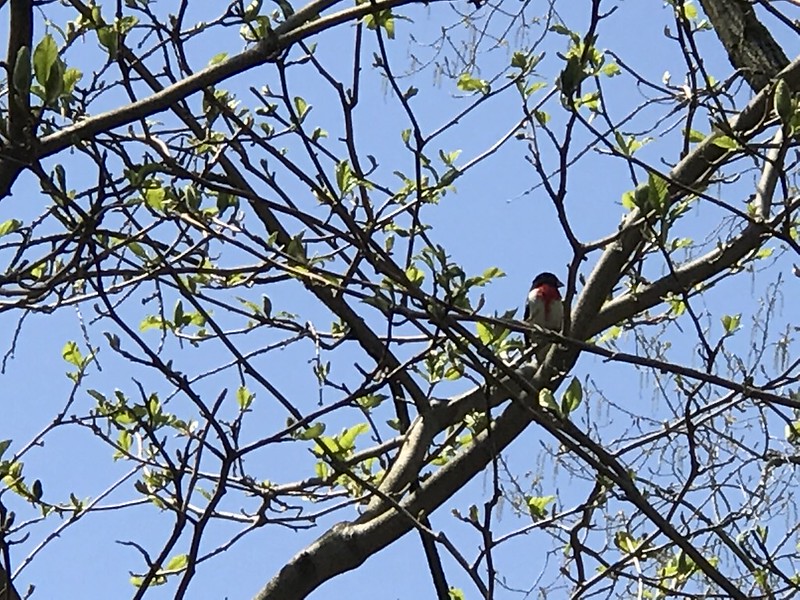

For lunch we headed to Hunter’s Brewing, which has traded in the long community tables for more conventional seating. It felt strange. I like Hunter’s because you can try different beers in small sizes.
I wasn’t feeling up to a hike, so I suggested the state park nature center — another hotbed of bird feeder action.
When I got out of the car, I was surprised and delighted to spot a female pileated woodpecker digging into a tree next to one of the trails. She’d started to attract a crowd from inside the center, and the hikers who noticed her stopped to gawk or gave her a wide berth so as not to scare her off. She continued to work the tree as the visitors took photos and video until someone came along with a dog. She finally flew off into the woods, although even then not far. I could almost hear her laughing like Woody Woodpecker.

In the back room overlooking the feeders, we watched cardinals, goldfinches, red-winged blackbirds, woodpeckers, etc., even a hummingbird (or two?).
Later a determined raccoon ambled up and climbed past the baffle, coming to rest on it (no doubt bending it). It gorged on seeds until one of the nature center staff shooed it away. It didn’t go far, however, and returned within minutes each time. She took a photo to prove the baffle hadn’t done its job.

One man, who was not quite the bird expert he pretended to be, mentioned he wanted to see a rose-breasted grosbeak. He left after a long visit — about three to five minutes before a rose-breasted grosbeak appeared. Typical.
I didn’t get any good shots, but seeing the pileated woodpecker so closely and clearly made my day.
The nature center closed, so we went to the Longshore Tower off the west parking lot overlooking the state park beach. We discovered the tower is accessible, with disabled parking near a sloping paved path compared to the stairs from the west lot. A grandmother had wheeled her grandson up there. After I arrived, they politely demurred to each other about when they should leave. “Do you want to go?” “Do you want to go?” “Do you want to go?” Eventually someone decided to go, and they went.
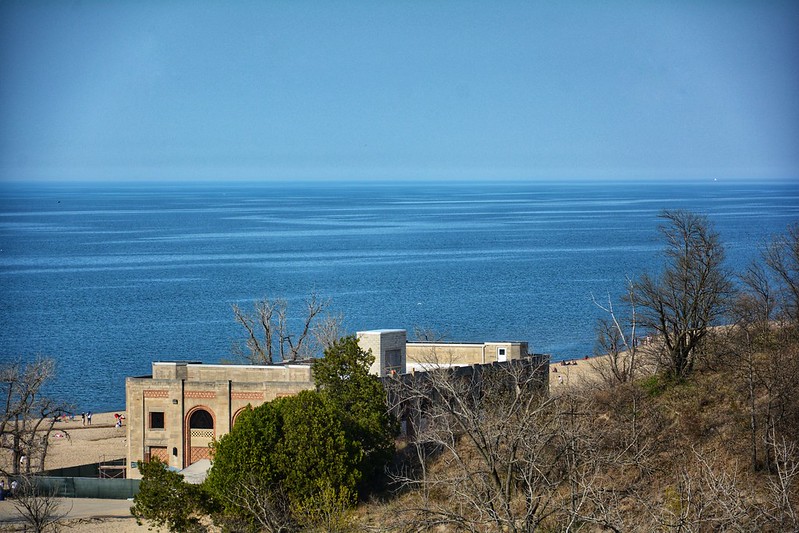
After checking out the view, we walked up a trail to the top of the dune. True to form, J. made it to the top, while I fell short by several feet — at the point where the steepness tested my ability to take one step forward without sliding two or three back.

Finally, we left, but it was early enough I decided to check out the road I’d seen that goes out into Wolf Lake. Once I’d figured out how to look for it in Google Maps, it wasn’t hard to find — if you’re willing to cross railroad tracks, hit many bumpy spots, and splash through water on low spots in the road.

We found we’d been on part of this road before one autumn, but as pedestrians. At a certain point it had been closed, probably for hunting. I recognized the spot at which I’d stopped walking and waited for J., who’d gone ahead for a short distance. Little had we known the road continued most of the way over the lake. Time of year matters.
After driving through the woods we came out near a low spot where the lake sloshed onto the road, parked for a bit, and took in the late afternoon scenery. Canada geese meandered up and down and across the road, goslings in tow. I don’t worry about them becoming an endangered species soon.
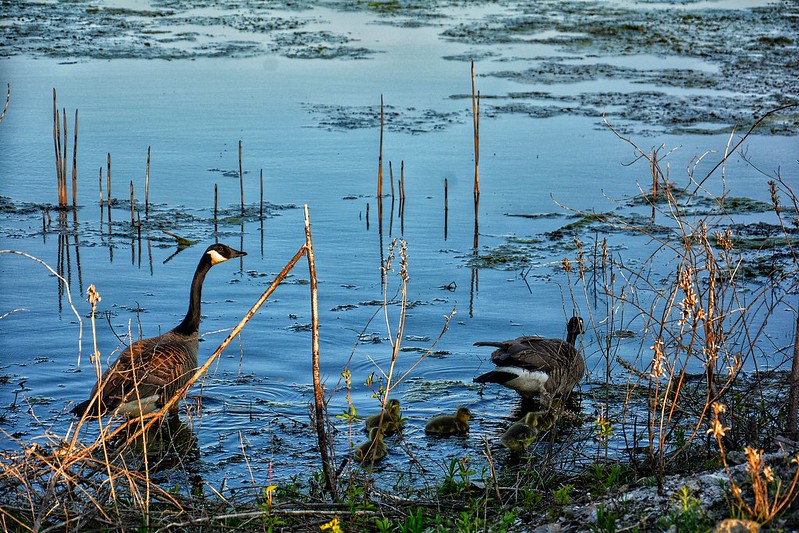

We drove to the end of the road, past a number of anglers. The road is part of the Illinois-Indiana state line. I read that game officials like to patrol it to make sure anglers have a license for the waters into which they’re dipping their lines. If true, that’s hilarious. The fish, of course, are indifferent to such niceties of residency.
Near the end, we found a nature sanctuary on a slight elevation and walked down part of the trail. Later motorcyclists, who’d been revving their engines near the top, rode down it and into the wetlands. I wonder if that’s a “thing.”
By now the sun was setting, and most of the anglers and other visitors were leaving or packing up. The regular entrance/exit was closed so we navigated to an alternative exit on a side street. It would be easy to get lost around there.
And so ended another little adventure on the tranquil note of a lake sunset accompanied by the roar of motorcycle engines.

Letter from Michiana: Our newest national park (David Hoppe):
I suppose most people go to national parks to get away from it all. To leave the world they know behind. This kind of escape is available at our newest national park. But there is something else. Something I think my friend was alluding to. You don’t get away from it all at the Indiana Dunes National Park the way you might at Yosemite or Yellowstone. In fact, you come up against it. This national park, you realize, is actually a last line of resistance, a green and blue membrane holding back the accumulated pressure human will has piled on the earth and insisted was progress.
David Hoppe
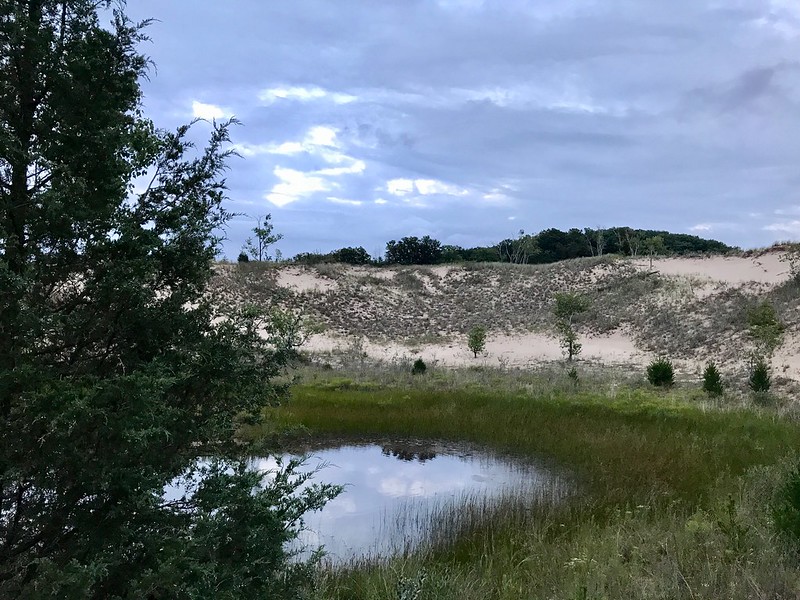

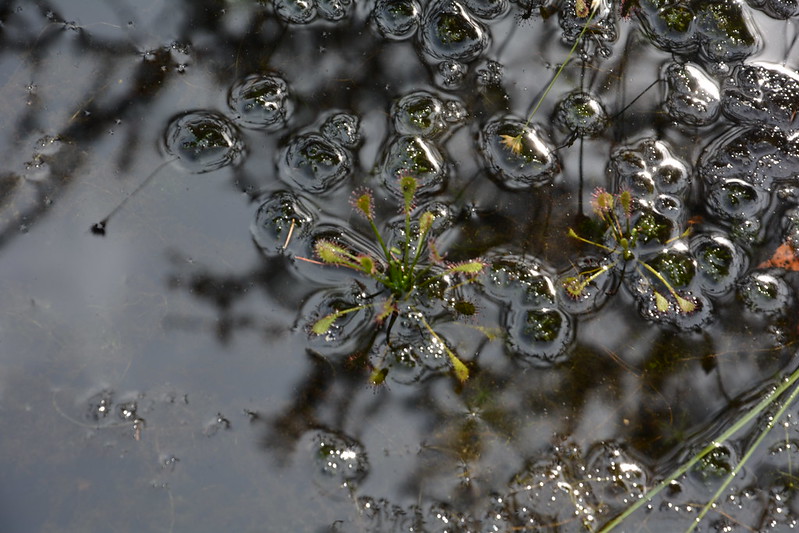
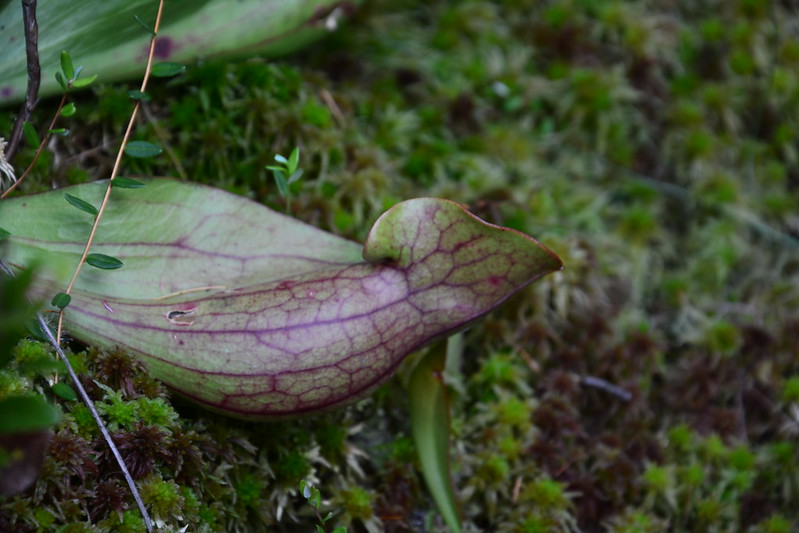


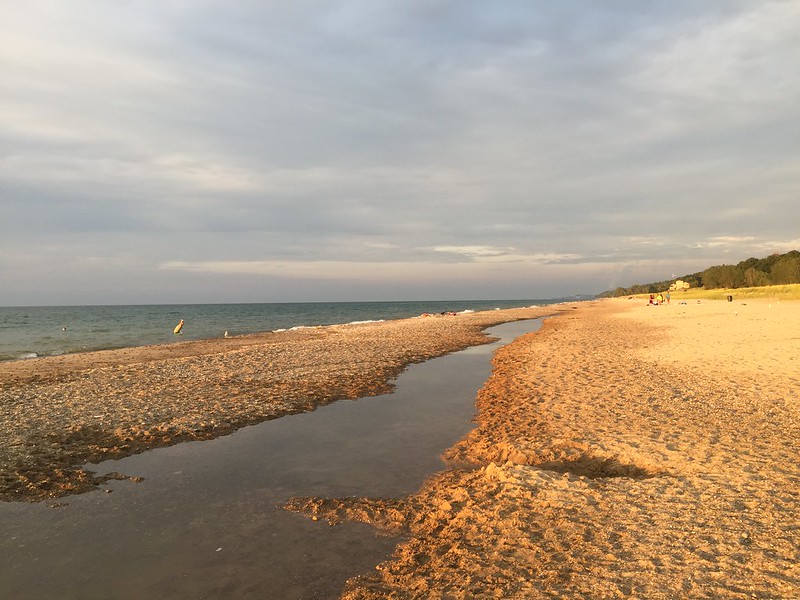

Here’s another example of a Belt of Venus seen from downtown Chicago. Darkness above and color below, partly due to old-school sodium vapor street lights.

For years, I’ve been taking photos of the Belt of Venus without knowing it. NASA’s Astronomy Photo of the Day explains.
